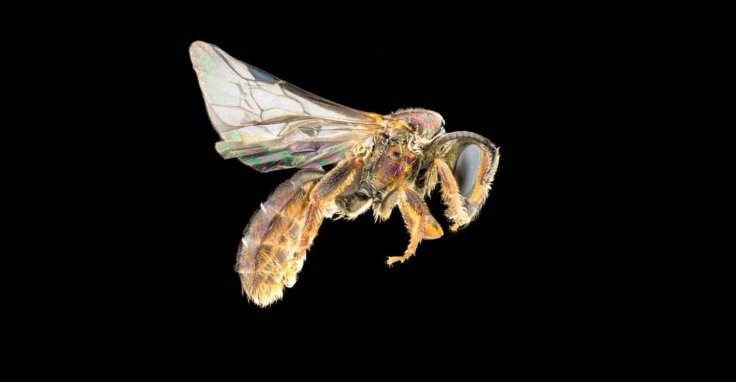
Honey bee and many of our wild native bees are disappearing at an alarming rate and the major reason behind their decline is excessive use of pesticides in crops and certain blood-sucking parasites that only reproduce in bee colonies. Recently a new species of colourful bees was found in Fiji, but climate change may push them towards the extinction.
The currently found species is a biodiversity bee which is still alive in Fiji but the researchers fear that along with climate change, noxious weeds and multiple human activities are making their survival difficult. It should be known that the New Colombo Plan in biological sciences also studied the same in various field trips.
A team of Australian researchers found those colourful special bees and noticed that some of them are already showing signs of how environmental changes are affecting them.
Flinders University PhD student James Dorey's macrophotography has captured some of these new bees in Fiji and showed the effects of climate change. "Homalictus terminalis is named so to indicate that, like many Fijian bees, it is nearing its limit and is at risk of climate-related extinction," he said.
He mentioned that H terminalis, which can be seen "only on Mount Batilamu near the city of Nadi, where many tourists launch their holidays," has only been found within 95 meters of the mountain peak.
This study was done by the students of South Australian University who were sent to Fiji for the Australian Government's New Colombo overseas study program for several years. They named nine new bee species.
The researchers noted that black Homalictus achrostus with large mandibles is one of the most interesting endemic bee species on Fiji. As per the research like other Fijian bees this new species has been found on a single mountain top.
Flinders University Associate Professor Mike Schwarz, a co-author on the paper said six bees were collected from Mount Nadarivatu in the 1970s and two in 2010, but despite frequent search since then, "no more have been found."
Prof Schwarz said, "The cooler climate of the Fijian highlands could be slowly pushed upwards and off the top of the mountains bringing with it the species that require this climatic refuge... With H. achrostus one of the four previously described species of endemic bee in Fiji, this raises real concerns about the extinction of many highland species in Fiji and across all of the tropics."
Mark Stevens, South Australia Museum senior researcher on terrestrial invertebrates said that the genus Homalictus Cockerell has not been taxonomically reviewed in the Fijian archipelago for 40 years.
He believes that this field trip allowed the research team to describe four known species as well as nine new ones.
Stevens, who is collaborating on the study also added that "most of the species diversity (11 species) live 800 meters or more above sea level, which highlights the vulnerability of highland-restricted species to a warming climate."









